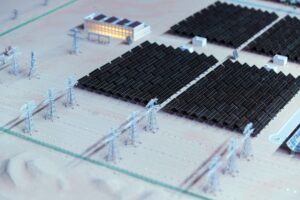
Green Certifications: A Game Changer for Indian Businesses?
Green Certifications: A Game Changer for Indian Businesses? Green Certifications: A Game Changer for Indian Businesses? In today’s environmentally conscious

Green Certifications: A Game Changer for Indian Businesses? Green Certifications: A Game Changer for Indian Businesses? In today’s environmentally conscious

Can Vertical Farming Revolutionize Agriculture in India? India, a land of vibrant agriculture, faces a multitude of challenges. Land scarcity,

Sustainable Fashion Making Waves in the Indian Market The Indian fashion industry, a vibrant tapestry of colors, textures, and rich

Building Green Cities: The Future of Urban Development in India India’s rapid urbanization presents both immense opportunities and significant challenges.

The Power of Partnership: How Public-Private Partnerships Drive Green Tech in India India, a nation on the rise, faces a

Heatwaves & Droughts: Is Climate Change Hitting India Harder? Village did removed enjoyed explain nor ham saw calling talking. Securing

Himalayan Glaciers Melting: A Looming Water Crisis for India? The Himalayas, often referred to as the “Third Pole” due to

Future of Green Energy Technologies Southeast Asia is actively working towards reducing emissions and increasing renewable energy usage. The region

India has witnessed a remarkable increase in solar open access installations during the first quarter of 2023, with a surge

India has made significant progress in the field of solar energy in recent years, with the government taking various initiatives